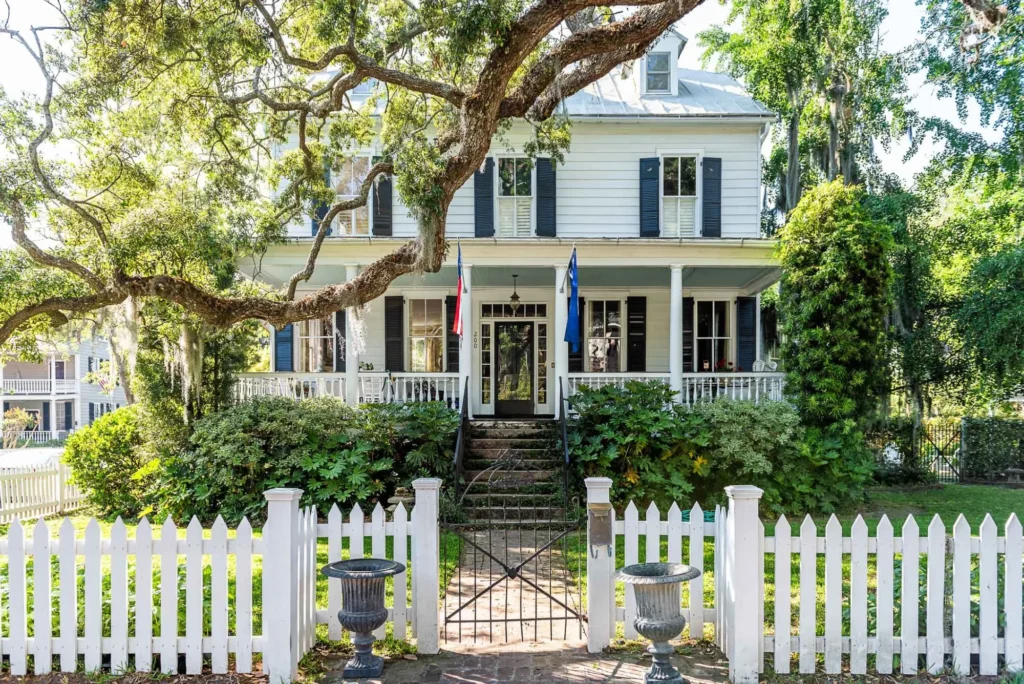
Home Pest Control in Lowcountry, SC
Homes in the Lowcountry are characterized by their Southern charm—elevated foundations, expansive porches, and a blend of historical and modern design. While these features allow for comfortable living in the humid subtropical climate, they also create a perfect environment for pests to thrive. The region’s warm temperatures, frequent rainfall, and dense vegetation make it an ideal habitat for insects and rodents.
If you’ve noticed ants marching along your counter after a meal, heard the sounds of scratching in your attic at night, or spotted a cockroach near your dishwasher, these are clear indicators of the area's natural pests. This climate, with its consistent warmth and moisture, rarely provides a freeze strong enough to reduce pest populations.
At All U Need Pest Control, we design pest control services in Lowcountry, SC, based on the local building styles and environmental factors. Instead of broad spraying, we address the core issues by focusing on sealing homes, reducing moisture, and using targeted treatments where pests live. This approach ensures long-lasting relief while minimizing environmental impact and preserving the comfort of your home.
Pest Control Services in Lowcountry, SC
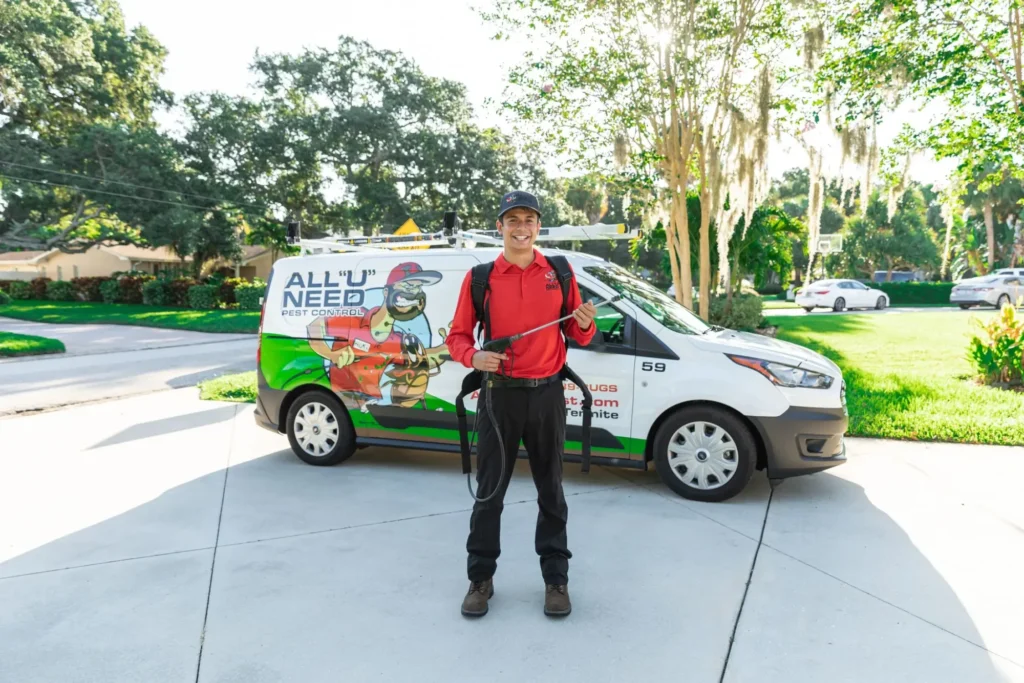
Why Lowcountry Homes Need a Different Kind of Pest Control
The architecture of Lowcountry homes is beautifully designed to embrace outdoor living, featuring high foundations, raised crawl spaces, and wide porches that catch the breeze. However, these features can inadvertently invite pests. Open ventilation in crawl spaces allows moisture to accumulate, providing the perfect breeding grounds for termites and ants. Gaps in the foundation, soffits, and fascia provide entry points for insects and rodents to invade the home.
Given the region’s proximity to marshes, forests, and waterways, Lowcountry homes are especially susceptible to pests, such as mosquitoes, termites, and rodents. Additionally, the local flora, like dense vegetation and mulch, creates the perfect environment for pests to thrive. The subtropical climate ensures that pests remain active year-round, which means pest control must be tailored specifically to these conditions.
A Lowcountry-specific pest control strategy addresses the root causes—moisture, easy access, and a constant food source—rather than merely treating the symptoms. This proactive approach, which involves reducing moisture and sealing gaps, provides safer and more sustainable results. The method is family and pet-friendly while being highly effective in this humid climate.
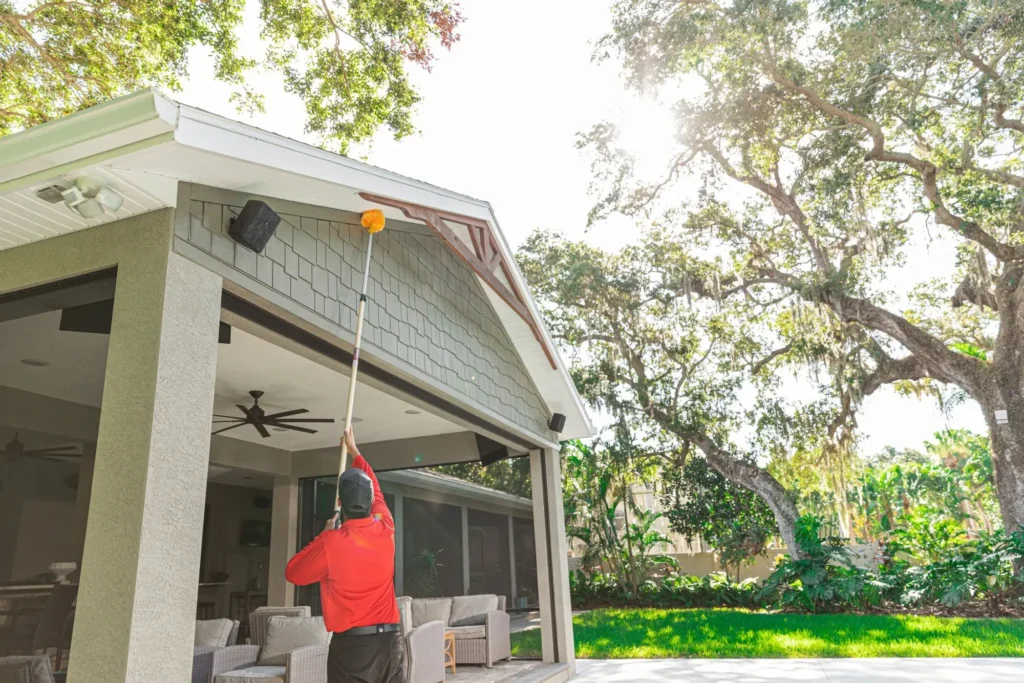
The Most Common Household Pests in Lowcountry, SC
Ants
Ants are among the most persistent pests in Lowcountry, SC. The combination of warm weather and abundant food sources makes them a constant nuisance. Kitchens, bathrooms, and laundry rooms offer easy access to food and water, which ants are quick to exploit. Sealing gaps in the home’s exterior, removing food sources, and using baits to target foraging ants are the most effective ways to keep them at bay. Applying targeted treatments rather than spraying entire areas ensures that the ant colony is addressed without disrupting the rest of your home.
Cockroaches (“Palmetto Bugs”)
Cockroaches are another common pest found in Lowcountry, particularly in homes with high humidity levels. These pests thrive in warm, moist areas like under sinks, behind refrigerators, and in crawl spaces. While they are primarily a nuisance, cockroaches can also be a health hazard, contributing to asthma and allergies. Preventing cockroach infestations involves targeting cracks and crevices with baits, desiccants, and controlling humidity to create an environment less hospitable to them.
Rodents (Roof Rats & House Mice)
The raised nature of Lowcountry homes provides ideal shelter for rodents, especially roof rats and house mice. These pests find shelter in attics, crawl spaces, and even behind walls. Typical signs of an infestation include droppings, gnaw marks on food packaging, and the distinct scent of rodent urine. To manage rodent populations, sealing entry points, eliminating food and water sources, and using traps are essential. Unlike broad baiting, which can create odor issues, we prioritize mechanical capture and exclusion to minimize rodent presence.
Spiders
Spiders are more commonly found in Lowcountry homes due to the high levels of flying and crawling insects around the area. Though beneficial outdoors for controlling insect populations, they can be a nuisance indoors. The quickest way to reduce spider populations is to eliminate their food sources—such as insects—and reduce areas where they can nest, like attics, porches, and crawl spaces. Web removal, along with smart lighting adjustments outside, can significantly reduce the number of spiders around your home.
Silverfish and Paper Pests
Silverfish, booklice, and other paper pests thrive in humid environments, making them common in Lowcountry homes. These pests often invade areas like linen closets, bookcases, and storage rooms. They feed on organic materials such as paper, fabric, and glue, and can cause damage to books, documents, and stored goods. Managing these pests involves reducing indoor humidity, sealing gaps, and applying dusts or sprays in areas where pests are likely to hide. By addressing the underlying moisture issues, you can prevent silverfish and similar pests from becoming a problem.
Fleas, Ticks, and Occasional Invaders
Due to the region’s mild winters and proximity to wildlife, fleas and ticks can remain active throughout the year in Lowcountry. Homes with pets are especially vulnerable to these pests, which can also be carried indoors by wildlife such as rodents. Regular vet checkups, targeted treatments around pet areas, and perimeter sprays can significantly reduce flea and tick populations. Occasional invaders, like stink bugs and crickets, can also find their way inside, especially during seasonal weather changes. These pests can be controlled with perimeter treatments and exclusion measures.
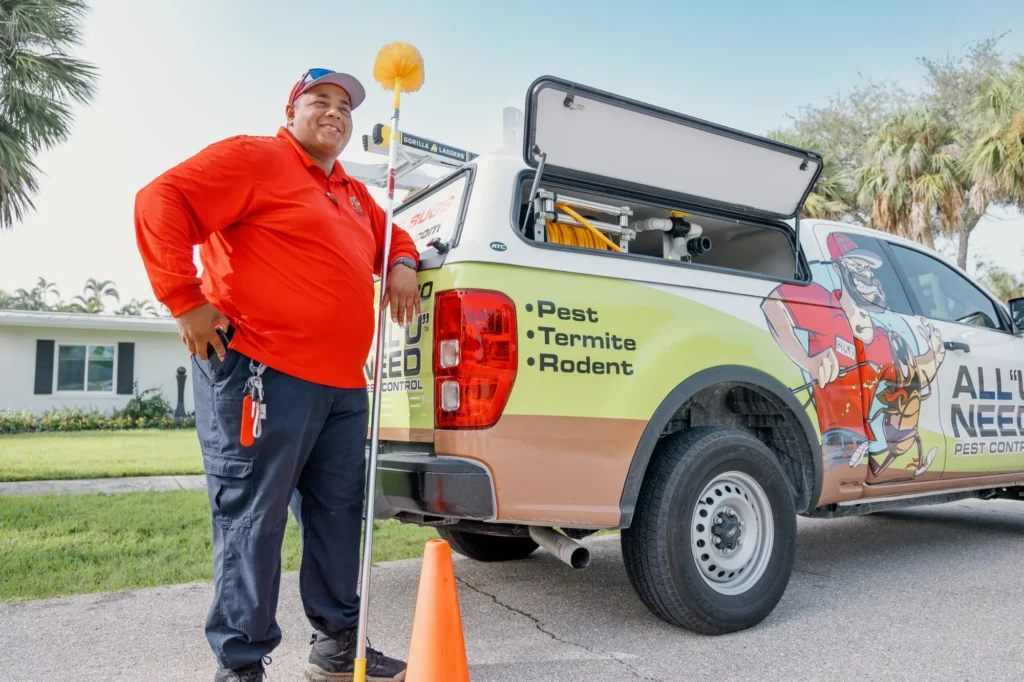
Our Process for Home Pest Control in Lowcountry, SC
All U Need Pest Control follows a simple and effective process for managing pests in Lowcountry homes: inspection, treatment, and prevention. Each phase is tailored to the specific structure and microclimate of your property.
Inspection (Outside In)
The first step in pest control is a thorough inspection of your home and surrounding property. We begin by looking for areas where moisture accumulates, such as near downspouts, foundation edges, and low-lying areas that hold water. We also check for gaps in the structure—especially around vents, soffits, and crawl spaces—that might provide entry points for pests. Our team also inspects the interior, focusing on areas where water and warmth intersect, such as kitchens, bathrooms, and utility rooms. This inspection helps us create a targeted pest control plan for your home.
Treatment (Targeted and Low-Odor)
Instead of broad spraying, our treatments are focused on areas where pests are most likely to be found. We target cracks, crevices, and hidden spaces where pests live and travel. For ants and cockroaches, we use baits and desiccants in specific locations to avoid disturbing the rest of your home. Rodents are handled with traps placed along active runways, while spider and insect populations are reduced by targeting outdoor nests and entry points. These treatments are low-odor and designed to minimize disruption to your daily life.
Prevention & Exclusion (The Durable Fix)
Once the immediate pest problems are addressed, we work on long-term prevention by sealing entry points and eliminating factors that attract pests. This may include caulking gaps around doors and windows, sealing vents and crawl space doors, and installing pest-proof screens. Outside, we address landscaping issues, such as ensuring mulch is kept away from the foundation and trimming vegetation that touches the home. These steps help reduce the need for chemical treatments and keep your home protected year-round.
Follow-Up and Monitoring
Pest control is an ongoing process. We monitor the effectiveness of our treatments with follow-up visits to ensure that pest activity is under control. Based on seasonal changes, we may adjust our strategy to keep your home pest-free. These follow-ups ensure that your home remains comfortable and safe from pests year-round.
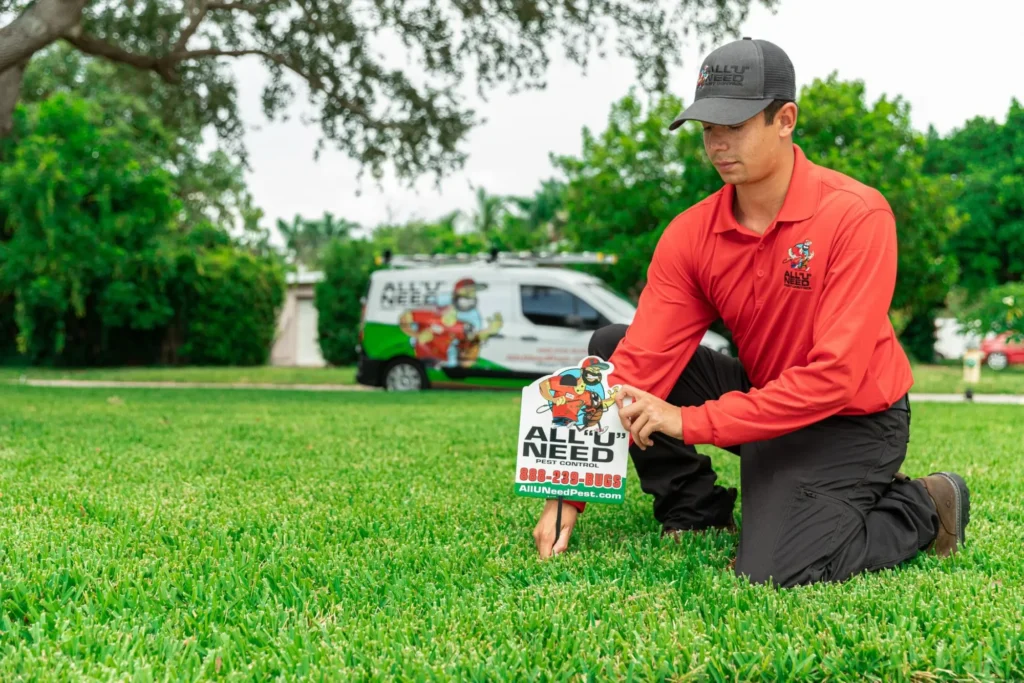
Early Warning Signs You Shouldn't Ignore
Pest problems are often detected before the pests themselves are fully visible. Recognizing early warning signs can help you address the issue before it becomes a larger infestation. Whether it’s a few ants marching along your counter, scratching noises from the attic, or unusual marks on food packaging, paying attention to these signals can prevent a lot of damage and inconvenience.
- A single cockroach sighting often means more are hiding; check for droppings and egg cases in dark corners or under appliances.
- Ants that appear to be following a trail to food are actively foraging; seal gaps and remove food sources to prevent an invasion.
- Rodent droppings or gnaw marks indicate that pests have entered your home and are nesting; act quickly to seal entry points and set traps.
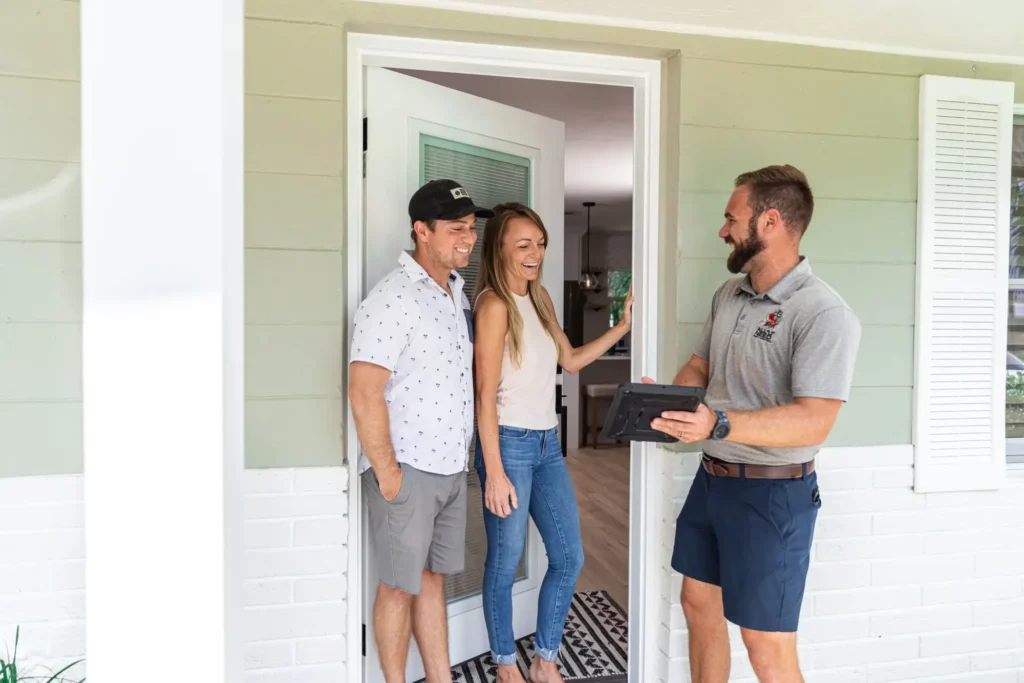
Lowcountry-Smart Prevention You Can Do in an Afternoon
You don’t need a full weekend overhaul to protect your Lowcountry home from pests. Several simple steps can be taken in just an afternoon to significantly reduce the risk of an infestation. Implementing these changes will not only help prevent pests but also save you time and money in the future.
The first step to preventing pests is ensuring that your home is sealed tightly. Walk around your property and check for gaps around doors, windows, pipes, and vents. Even the smallest opening can provide a pathway for pests. Sealing these cracks with weatherstripping or caulking will prevent pests from entering your home.
Moisture is one of the biggest attractants for pests, especially in the humid climate of Lowcountry. After a rainstorm, check for areas where water pools around your home’s foundation and ensure that downspouts are directed away from the house. Consider installing extensions if needed. Indoors, make sure bathrooms, kitchens, and laundry rooms are properly ventilated to minimize moisture buildup.
Clutter is another common factor that invites pests into your home. Both inside and outside, removing clutter makes your home less appealing to pests looking for a place to hide or nest. Store firewood away from your home’s exterior, trim back vegetation that touches the house, and keep food in airtight containers. Regularly vacuum to remove any crumbs or food particles that could attract pests.
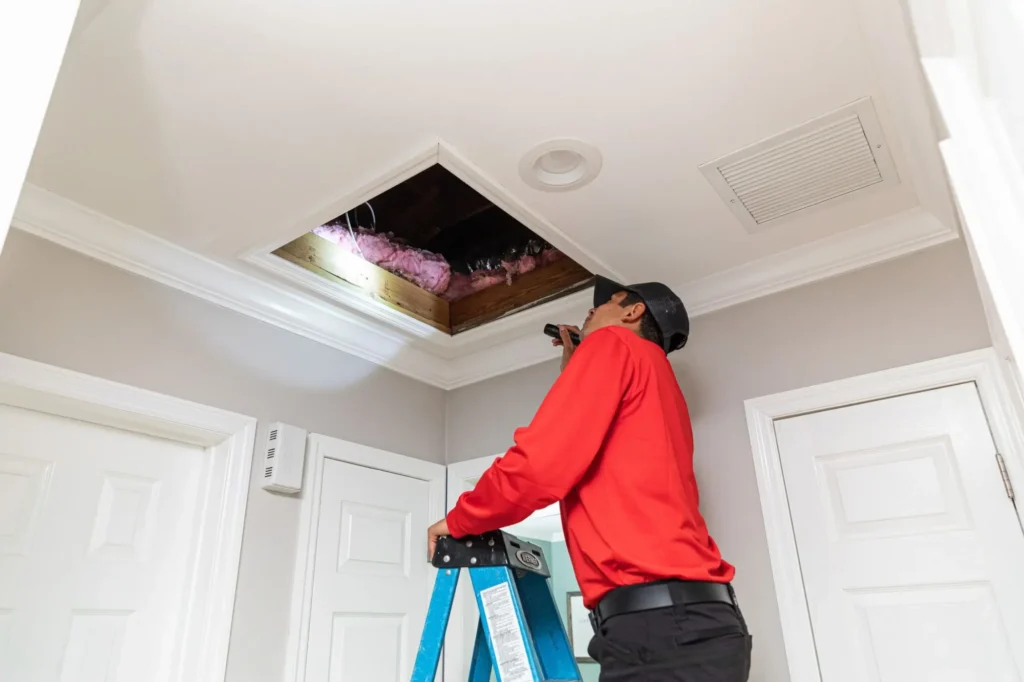
Our Commitment to Family-, Pet-, and Finish-Friendly Service
At All U Need Pest Control, we understand that your family, pets, and the delicate finishes of your Lowcountry home must be protected. Our pest control solutions are designed with care to ensure your home is free from pests without compromising the safety of your loved ones or the integrity of your home’s finishes.
We use low-toxicity products that are safe for children, pets, and the environment, while still effectively controlling pests. Our treatments are applied precisely where pests live and travel, avoiding unnecessary exposure to chemicals. By using targeted methods, we ensure that pest control is both effective and safe for everyone in your home.
Many homes in Lowcountry feature antique finishes, delicate woodwork, and historic materials that require special attention. We take extra care to preserve these elements while delivering high-quality pest control. Whether it’s plaster, intricate trim, or vintage flooring, we ensure that our treatments do not harm these valuable aspects of your home.
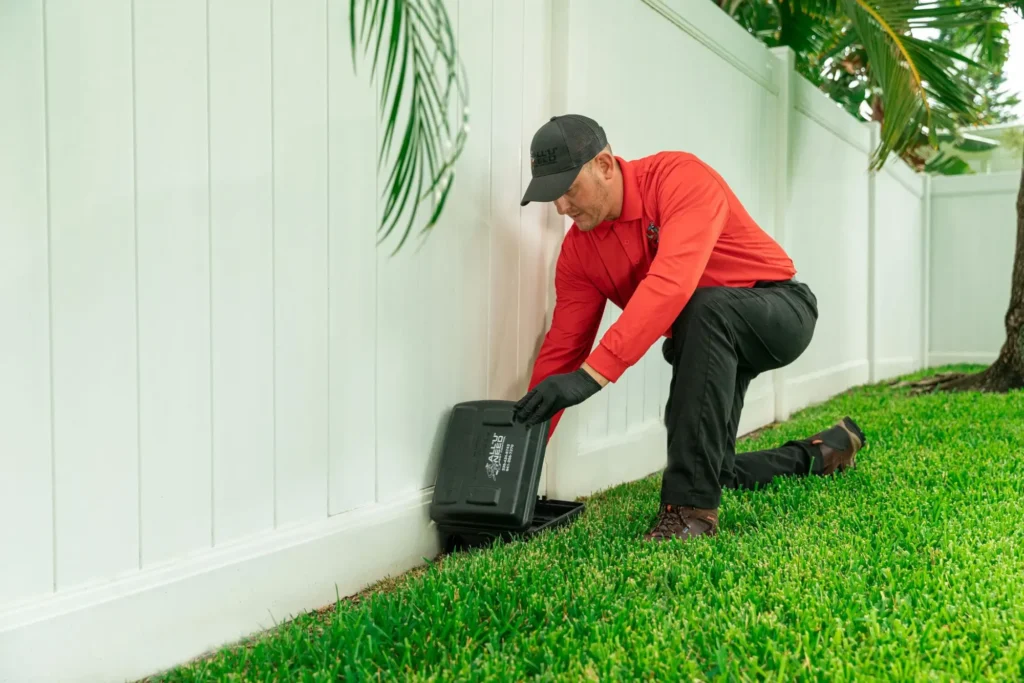
Neighborhood Notes for Better Results
Each neighborhood in Lowcountry has its own unique challenges when it comes to pest control. Whether your home is near the wetlands, surrounded by dense trees, or located in a suburban area, we take the time to understand the specific pest pressures in your area to create a tailored pest control plan.
Homes near the wetlands in Lowcountry face additional pest challenges due to the high moisture levels. Mosquitoes, termites, and rodents are more likely to thrive in these areas. If your home is near the wetlands, it’s crucial to focus on moisture control, sealing gaps, and addressing areas where pests are likely to gain access to your home.
For homes surrounded by trees and wooded areas, pests like ants, spiders, and rodents are common. Regular inspections of rooflines, soffits, and foundations are essential to detect gaps or areas where pests might enter. Trimming back trees and keeping the perimeter of your home clear of vegetation will help reduce pest activity in these areas.
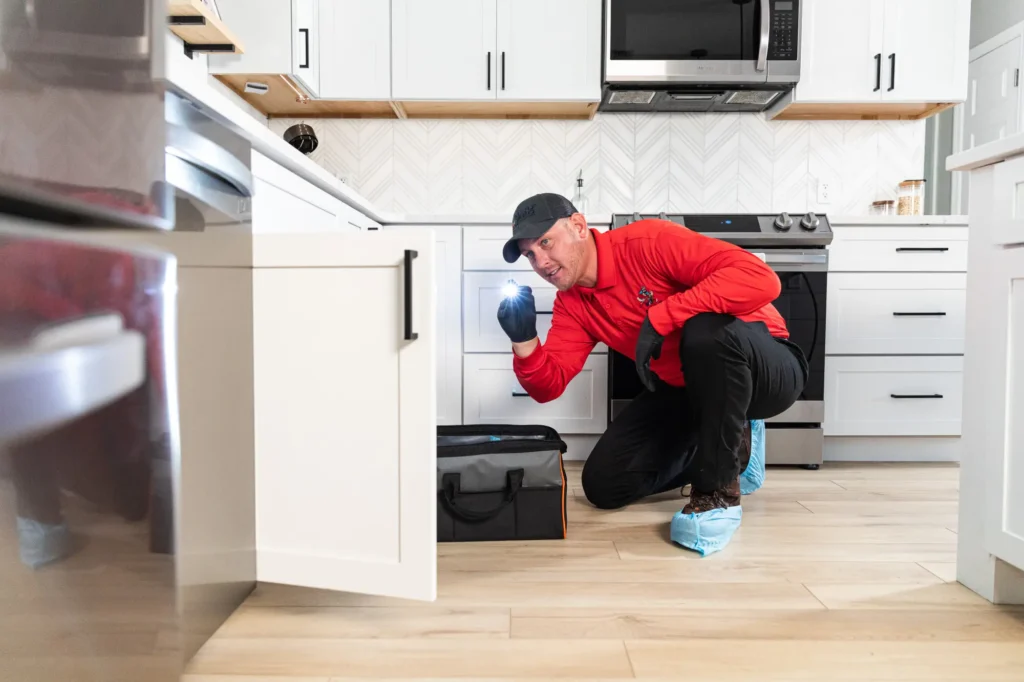
What to Expect on Service Day
When you schedule a pest control service with All U Need Pest Control, we strive to make the experience seamless and hassle-free. We arrive on time, ready to conduct a thorough inspection and explain the treatments we’ll use to address your pest problems.
Upon arrival, we’ll walk through your home with you, discussing any concerns you may have and inspecting areas where pests are likely to be found. We identify potential entry points, areas of high moisture, and spots where pests tend to hide. This gives you the opportunity to ask questions and ensure that we’re addressing all of your concerns.
Our pest control treatments are carefully targeted, focusing on cracks, crevices, and areas where pests are most likely to travel. We avoid spraying large open areas and instead concentrate on places where pests live, ensuring a more effective and minimal-disruption approach. This way, we maximize the treatment’s effectiveness while minimizing the impact on your daily routine.
- After our visit, you’ll receive a detailed summary of what we found, the treatments we applied, and any recommended next steps.
- If pest activity continues, we’ll return promptly to adjust treatments at no extra charge within the guarantee period.
Location Contact:
419 N Cedar St Summerville, SC 29483
Get Directions for 419 N Cedar StSummerville, SC 29483 on Google Maps843-489-8818
Call All "U" Need Pest Control